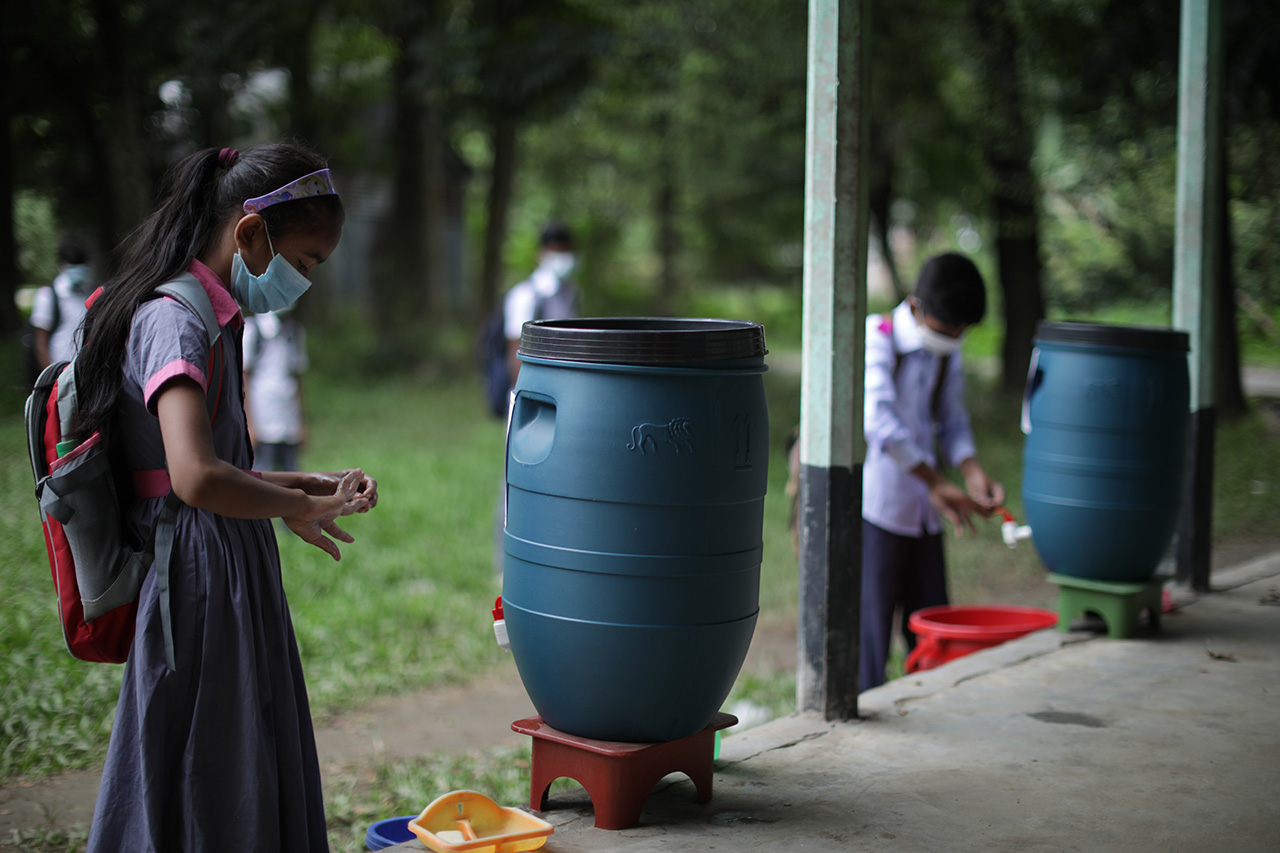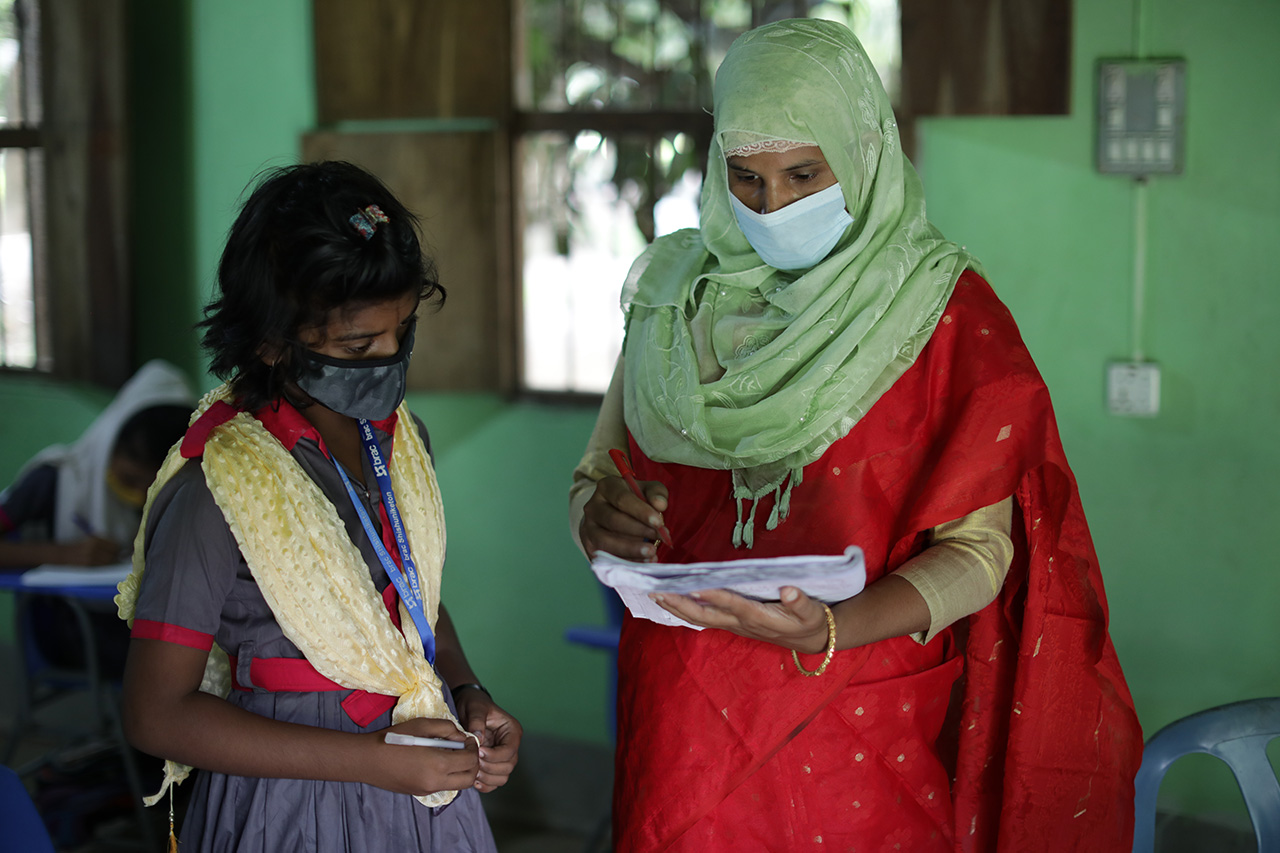Schools in Bangladesh reopen this week after the world's longest shutdown. Prior to the COVID-19 pandemic, BRAC was providing education for almost 750,000 students. During the extended closure, it continued teaching remotely, and ensured that close to 620,000 students graduated from their courses. The remaining students continued learning remotely and, after planning for reopening for months, BRAC opened its doors to 129,000 students this week.
The Challenge of Learning Loss
- Karnataka, India: ~1 year of learning loss
- 2005 Pakistan earthquake: 1.5 years to catch up after 3-month closure
- Remediation can reduce long-term learning loss by half

Students washing their hands prior to entering a BRAC school in Bangladesh
Staying safe, in a low-cost setting
Health Checks
- Temperature checks with digital thermometers
- Thermal scanners where available
- Private spaces for older girls
Classroom Adjustments
- Class sizes halved (15-20 students)
- Floor markings for social distancing
- Outdoor breaks every hour
Starting with a 'wellbeing' week
The first week focuses on:
- Mental and physical wellbeing
- Health education
- Sharing pandemic experiences
- Re-establishing school routines
This process is enhanced by reduced class sizes and teachers who understand each student's personal circumstances.

Students line up to get their temperatures checked at a BRAC school
Curriculum Priorities
To maximize limited time, the curriculum was split into:
- Must learn: Core competencies (priority)
- Should learn: Important but not essential
- Good to learn: Supplemental material
Assessing learning gaps
Initial Assessment
After wellbeing week, teachers evaluate 'must learn' competencies from previous grade
Remedial Plan
17-20 days of targeted intervention based on assessment results
Second Assessment
Students grouped by level (good, medium, needs improvement)

A teacher reviews a student's work at a BRAC school
Will 18 months of phone schooling efforts pay off?
With only 8.7% of the poorest households having internet access, BRAC implemented:
- Feature phone conference call classes
- Home assignments
- Individual home visits
- Community radio and TV lessons
A 2021 rapid appraisal showed these measures successfully supported continued learning.
BRAC's Education Model
- 'One-teacher, one-room' community schools
- Local women trained as teachers
- 25-30 students per class
- Complemented by pre-primary, secondary, and youth services

A teacher works with her students in a BRAC school
BRAC is initially reopening with just its continuing students. With the present academic year soon coming to a close, plans are afoot to start new cohorts early next year.
BRAC started working in education in 1985. Its high quality, affordable, scalable schooling model has made it one of the world's largest providers of secular, private education. Its holistic approach to lifelong learning, addressing educational needs from early childhood to higher academic levels supported over 15 million students across five countries to graduate to date.
Cover photo: Abdullah Al Kafi © BRAC
This write-up received inputs from Safi Rahman Khan, director of BRAC's education programme in Bangladesh, and Profulla Chandra Barman, programme head BRAC's education programme in Bangladesh.
